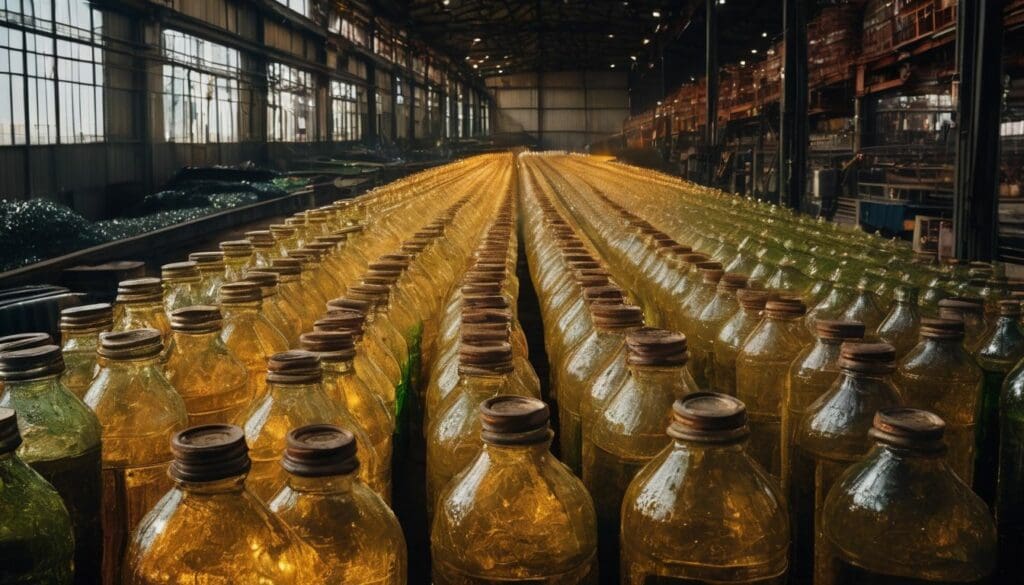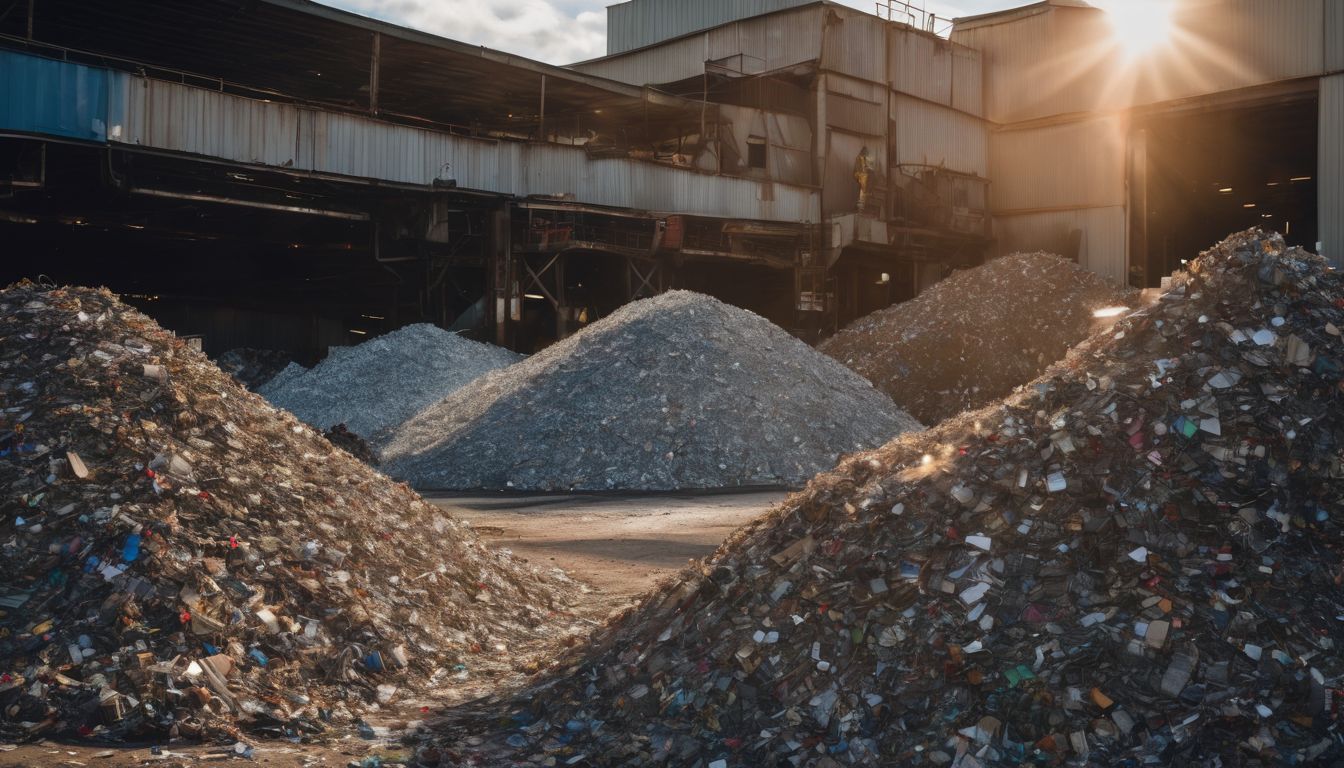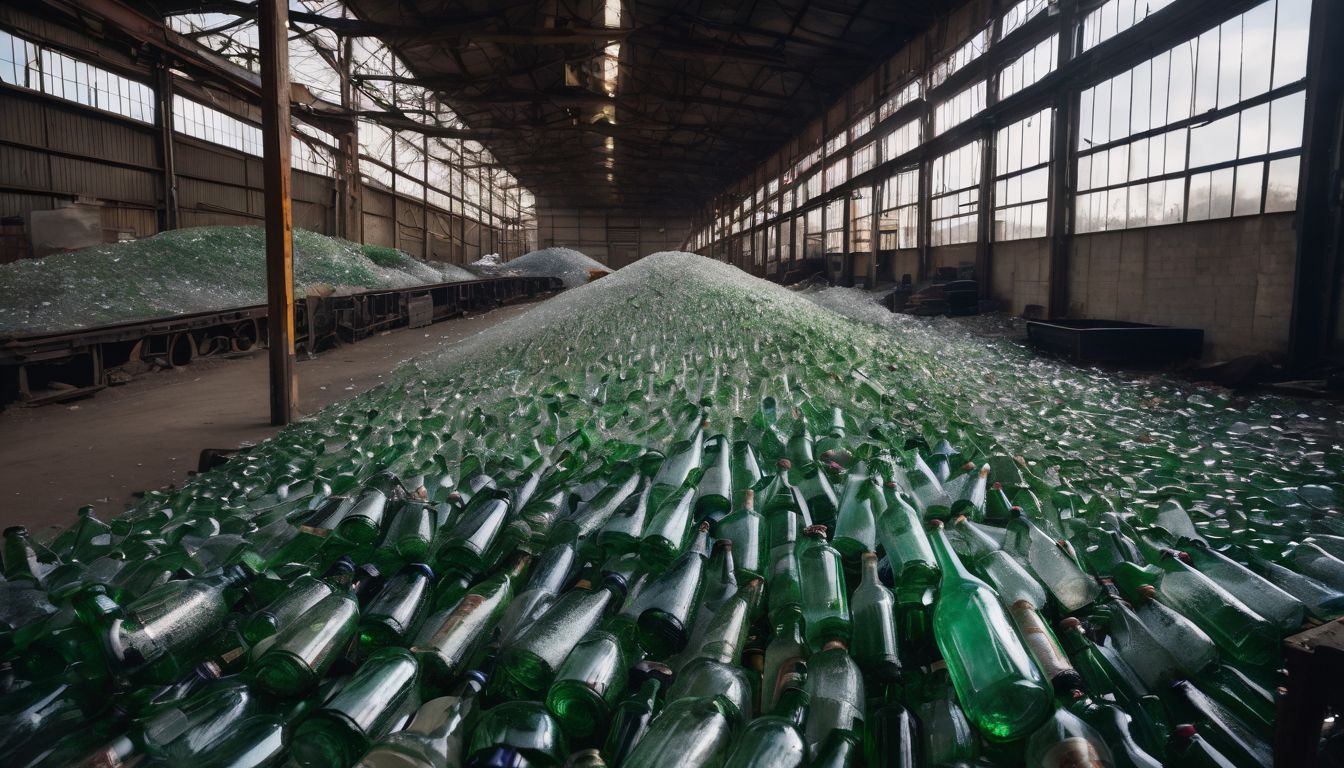Are you tired of seeing how much waste we all create every day? Each year, tonnes of materials are tossed away, often ending up in landfills or oceans. This article will explore how upcycling can be a game-changer in reducing this waste and making our world cleaner.
Read on to discover creative solutions that make a real difference!
Key Takeaways
- Upcycling is an innovative process where unwanted materials are transformed into products of higher quality or value, which reduces waste and supports environmental sustainability.
- By creating new items from discarded resources, upcycling significantly lowers the volume of waste sent to landfills and lessens our carbon footprint. It also encourages eco-friendly consumption and production practices.
- Engaging in upcycling benefits both communities and individuals by creating jobs, stimulating economic growth, fostering creativity, saving money, and improving mental well-being.
- To promote upcycling efforts, businesses can use repurposed materials in their operations and products while individuals can participate in DIY projects and support local events that focus on sustainable reuse.
- Implementing upcycling strategies helps preserve natural resources for future generations by extending the life cycle of materials; it’s a key step toward achieving a circular economy where nothing is wasted.
Understanding Upcycling
Upcycling is the process of repurposing discarded materials into new and useful products, reducing waste and environmental impact. It involves transforming items that would otherwise be thrown away into something of higher value and quality.
Examples include upcycled furniture, fashion, and accessories.
Definition
Upcycling transforms waste materials or unwanted products into new materials or goods of better quality. It’s a creative reuse process that adds value to items that might otherwise be thrown away.
Unlike recycling, which often breaks down products into raw materials, upcycling directly reworks an item to give it a second life. For instance, old clothes can become unique pieces of sustainable fashion while discarded wood pallets are turned into stylish furniture.
This practice not only extends the life span of resources but also reduces the environmental footprint associated with manufacturing new products.
Consider an empty glass bottle; instead of landing in landfill, it’s repurposed as a trendy lampshade radiating ecofriendly charm. Or picture food loss being tackled by crafting imperfect fruits into delectable jams and preserves, presenting a perfect example of resource conservation at work.
Each act of upcycling supports environmental sustainability and embodies principles from the circular economy where nothing goes to waste and everything serves multiple purposes through ongoing cycles of use and creativity.
Examples
Upcycling refers to the process of transforming waste materials or unwanted products into new items with higher value. Here are some examples of upcycling in action:
- Old denim jeans turned into fashionable tote bags, reducing fashion waste and promoting sustainable living.
- Discarded glass bottles used to create unique lamps, contributing to waste reduction and energy savings.
- Broken furniture pieces repurposed into stylish home decor, showcasing the value-added use of materials and reducing environmental footprint.
- Scraps of fabric sewn together to make colorful quilts, demonstrating eco – friendly practices and sustainable development.
- Empty wine bottles transformed into decorative vases, promoting creative ways to repurpose materials and supporting conservation efforts.
The Environmental Benefits of Upcycling
Upcycling offers significant environmental benefits by reducing waste and minimising the strain on natural resources. Repurposing materials to create new products reduces the amount of waste sent to landfills, lowering carbon emissions and conserving energy.
Upcycled clothing and products also contribute to sustainable fashion, promoting eco-friendly practices and supporting green technology. By embracing upcycling, individuals can actively participate in waste management, leading to a more environmentally conscious society.
The value-added use of materials through upcycling not only extends their lifespan but also encourages a shift towards more sustainable consumption habits. Upcycled products provide an alternative to fast fashion and single-use items, thereby reducing the environmental impact of production processes and lessening the demand for raw materials.
As a result, upcycling promotes conservation efforts while fostering a deeper connection with our resources and the planet as a whole.
The Social and Economic Benefits of Upcycling
– Job creation in local communities is one of the key social benefits of upcycling, providing opportunities for employment and skills development. Additionally, upcycling can stimulate economic growth by creating new markets and products from discarded materials.
Job creation
Upcycling contributes to job creation by fostering the demand for skilled artisans and craftspeople who can repurpose materials into new, valuable products. This process not only creates local employment opportunities but also supports sustainable economic development within communities.
By upcycling, individuals and businesses can contribute to a circular economy that prioritises local job growth while reducing waste and dependence on scarce resources.
Community involvement
When considering the role of upcycling in waste reduction, it’s essential to highlight the significant impact community involvement can have. Engaging local residents in upcycling initiatives promotes environmental awareness and empowers individuals to make a tangible difference.
Through collaborative efforts, communities can establish recycling programs and workshops that encourage creativity and sustainable practices.
Moreover, community involvement fosters a sense of ownership and pride in environmental stewardship, nurturing a collective commitment to reducing waste. By organising clean-up events and educational sessions on upcycling, communities actively contribute to the preservation of natural resources and the promotion of eco-friendly behaviours.
Personal Benefits of Upcycling
Upcycling offers individuals the chance to unleash their creativity and showcase their unique style through crafting, DIY projects, and repurposing items. By engaging in upcycling, people can save money by avoiding purchasing new items and instead finding innovative ways to give old materials a new lease on life.
This not only fosters a sense of accomplishment but also promotes resourcefulness and reduces reliance on mass-produced goods. Embracing upcycling as a personal practice can lead to a greater appreciation for the value of objects, encouraging mindfulness about consumption and environmental impact.
Moreover, participating in upcycling activities can contribute to improved mental well-being by providing opportunities for relaxation, stress relief, and positive self-expression.
Engaging in creative endeavors has been shown to enhance mood and satisfaction while reducing anxiety levels – all of which are clear personal benefits from incorporating upcycling into one’s lifestyle.
Implementing Upcycling to Reduce Waste
Businesses can implement upcycling by reusing materials in their production process, while individuals can reduce waste by repurposing items for a longer lifespan. Read on to discover more ways to incorporate upcycling into your everyday life.
Strategies for businesses
Tips for individuals
- Repurpose old clothes and textiles by turning them into rags, quilts, or reusable shopping bags.
- Get creative with DIY projects by upcycling glass jars into storage containers or turning old furniture into something new and stylish.
- Support local thrift stores or swap meets to find unique upcycled items and reduce the demand for new products.
- Take part in community events such as clothing swaps or repair workshops to learn new upcycling skills and share resources with others.
Conclusion
In conclusion, upcycling plays a crucial role in waste reduction by adding value to materials and promoting eco-friendly practices. It fosters job creation and community involvement, contributing to social and economic benefits.
Individuals can also experience personal benefits through creative upcycling projects. By implementing strategic approaches, businesses and individuals alike can actively participate in reducing waste through upcycling initiatives.
FAQs
1. What is upcycling and how does it reduce waste?
Upcycling transforms old or discarded items into new products with added value, playing a crucial role in cutting down on waste.
2. Can upcycling be considered an eco-friendly practice?
Yes, upcycling is an eco-friendly practice that reduces the need for new materials by reusing existing ones in creative ways.
3. How does upcycling benefit the environment?
By giving a second life to materials through upcycled creations, we limit the volume of rubbish sent to landfill sites, thereby reducing pollution and conserving resources.
4. Is there a difference between recycling and upcycling when it comes to waste reduction?
Indeed, while both recycling and upcycling aim to reduce waste, upcycling specifically adds value by enhancing old products rather than just breaking them down into raw materials like recycling does.





